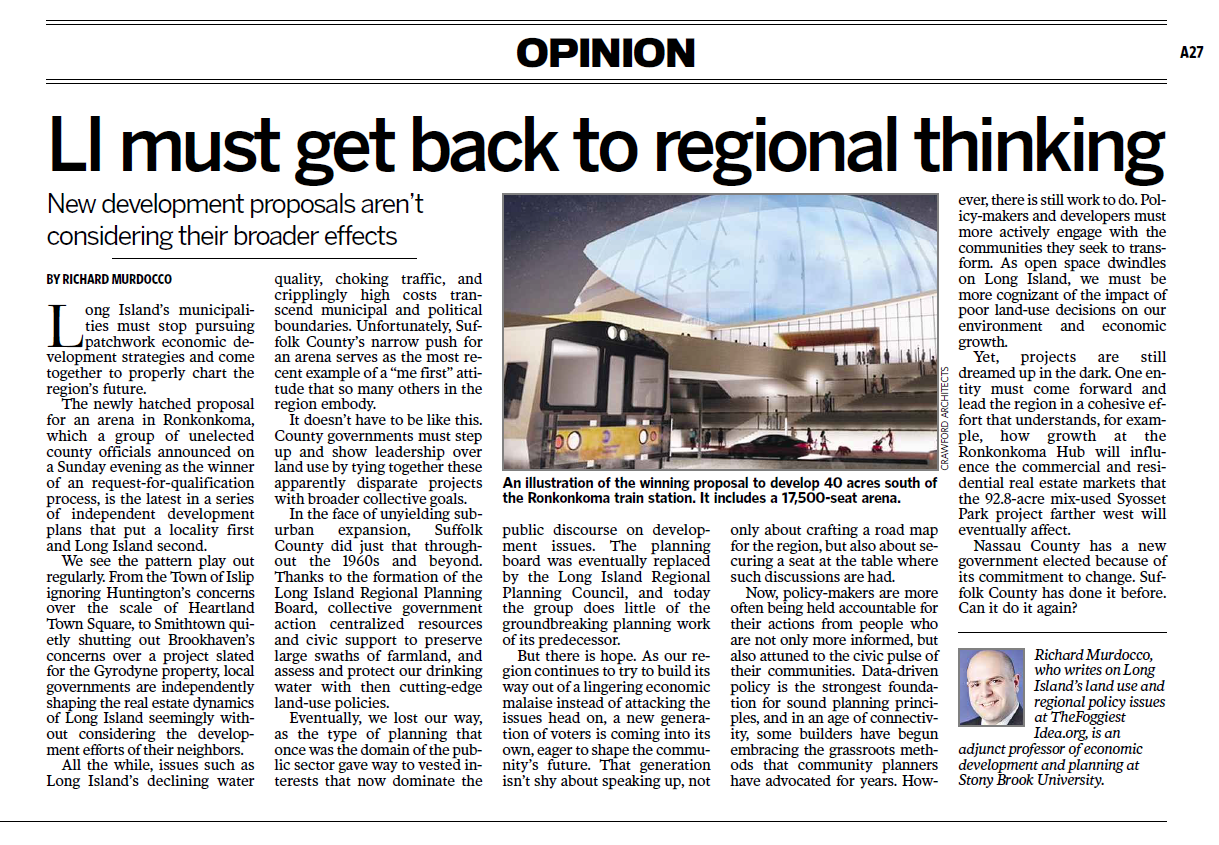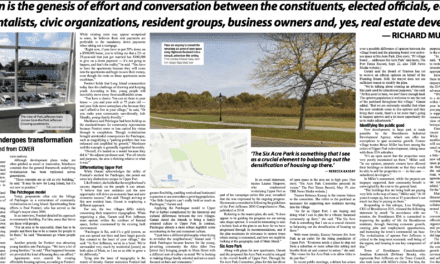The following was published on page A27 of the April 30, 2018 edition of Newsday. You can read the original version here.
New development proposals are not considering their broader effects.
Long Island’s municipalities must stop pursuing patchwork economic development strategies and come together to properly chart the region’s future.
The newly hatched proposal for an arena in Ronkonkoma, which a group of unelected county officials announced on a Sunday evening as the winner of an request-for-qualification process, is the latest in a series of independent development plans that put a locality first and Long Island second.
We see the pattern play out regularly. From the Town of Islip ignoring Huntington’s concerns over the scale of Heartland Town Square, to Smithtown quietly shutting out Brookhaven’s concerns over a project slated for the Gyrodyne property, local governments are independently shaping the real estate dynamics of Long Island seemingly without considering the development efforts of their neighbors.

All the while, issues such as Long Island’s declining water quality, choking traffic, and cripplingly high costs transcend municipal and political boundaries. Unfortunately, Suffolk County’s narrow push for an arena serves as the most recent example of a “me first” attitude that so many others in the region embody.
It doesn’t have to be like this. County governments must step up and show leadership over land use by tying together these apparently disparate projects with broader collective goals.
In the face of unyielding suburban expansion, Suffolk County did just that throughout the 1960s and beyond. Thanks to the formation of the Long Island Regional Planning Board, collective government action centralized resources and civic support to preserve large swaths of farmland, and assess and protect our drinking water with then cutting-edge land-use policies.
Eventually, we lost our way, as the type of planning that once was the domain of the public sector gave way to vested interests that now dominate the public discourse on development issues. The planning board was eventually replaced by the Long Island Regional Planning Council, and today the group does little of the groundbreaking planning work of its predecessor.
But there is hope. As our region continues to try to build its way out of a lingering economic malaise instead of attacking the issues head on, a new generation of voters is coming into its own, eager to shape the community’s future. That generation isn’t shy about speaking up, not only about crafting a road map for the region, but also about securing a seat at the table where such discussions are had.
Now, policy-makers are more often being held accountable for their actions from peoplewho are not only more informed, but also attuned to the civic pulse of their communities. Data-driven policy is the strongest foundation for sound planning principles, and in an age of connectivity, some builders have begun embracing the grassroots methods that community planners have advocated for years. However, there is still work to do. Policy-makers and developers must more actively engage with the communities they seek to transform. As open space dwindles on Long Island, we must be more cognizant of the impact of poor land-use decisions on our environment and economic growth.
Yet, projects are still dreamed up in the dark. One entity must come forward and lead the region in a cohesive effort that understands, for example, how growth at the Ronkonkoma Hub will influence the commercial and residential real estate markets that the 92.8-acre mixed-use Syosset Park project farther west will eventually affect.
Nassau County has a new government elected because of its commitment to change. Suffolk County has done it before. Can it do it again?
Richard Murdocco, who writes on Long Island’s land use and regional policy issues at TheFoggiestIdea.org, is an adjunct professor of economic development and planning at Stony Brook University.












